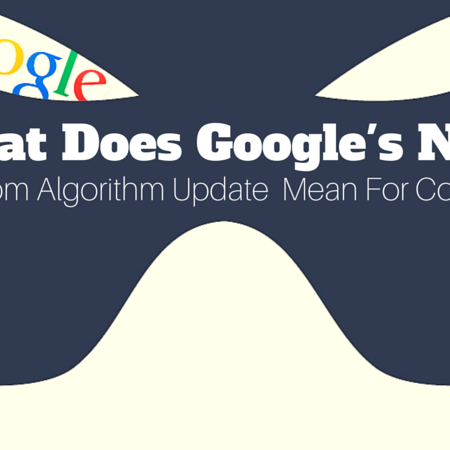What Google’s Phantom & Recent Updates Really Mean For Your Content
Over the years, marketers have come to realize that Google’s algorithm updates have been trying to build an Internet in its own image, especially true in the Google Phantom update. (Not a bad thing at all—keep reading.) Yes, Google is trying to doctor the Internet so that it conforms to what it sees as ideal. To this end, many of Google’s updates have been based around increasing the value of sites to the user. This user-centric approach has the positive effect of winnowing out the sites that create poor quality content, leaving high quality sites for users top consume. With summer 2015 bringing with it another potential important update, known as the Google Phantom, and hints of more updates on the way, now is the time for you to contemplate where your content is and how it can be improved. Google Phantom & Defining How To Create “Good Content” Everyone who does content creation should know by now what constitutes good content. Good content adds value to users’ lives. According to SearchEngineLand, good content either helps your audience understand a topic, displays unique expertise on the topic in question, compels people to revisit it or to link to it externally and encourages your audience to do something. Although there are many different other factors that affect whether content is considered good, the end result is that your content should be doing one or more of these things at its core. Why Filler Content Is Bad Business Now that we know what constitutes good content, we’ll look at the things that Google updates frown upon such as filler content. Remember, Google’s aim is to create an Internet environment that is conducive to users clicking, reading and empowering themselves. It can’t happen if the content that Google has to work with is insubstantial. 3 Common Errors To Avoid That Will Help You Steer Clear of Filler Content To avoid creating filler content, you should keep an eye on these common errors that can sneak in: 1. Duplicate/Redundant Posting It’s common knowledge that duplicate posting can cost you more than just a little SEO traffic. It can hit your search rank value pretty hard if you deal almost solely in duplicate traffic. While most sites avoid duplicating pages 100% they still fall prey to the misconception that they can have content that is almost similar (to a major degree) on multiple pages with only changing a few lines of the original content. This is also a problem in Google’s eyes, and can lead to a hit in the relevancy scores of these pages. A simple rewrite of the content on these pages is a good place to start, and a number of different online content production companies are skilled in page rewriting. 2. Ad Ratios The volume of ads on the page in relation to the actual content to the page is also a telling factor in how substantial the content on a particular page is. Affiliate pages that deal solely in ads are not seen as desirable by the Google algorithm. If you have one or more of these pages it might be a good idea to scale back on the sheer volume of the ads on the page or maybe include some more text-based or image-based content to balance out the amount of ads present. SearchEngineWatch has already stated that Google may penalize your site for having too many ads. 3. Poorly Written Articles or Posts In keeping with the ideal of good content, Google demands that your articles and posts be well written. Improving the quality of your content is a multi-layered task. You may be doing all you can within your power to increase the quality of your posts or articles and still getting back content that is insubstantial. Dealing with this problem requires you to raise the content value of your writing and your overall content production skills. How Do You Raise the Value of your Content? 3 Key Ways Ah, here’s the crux of the matter! Your content might follow all the mechanical necessities of Google’s algorithm, but does it really benefit anyone? It might be exactly what Google is looking for but it’s nothing like what your users are looking for, and Google knows it. Your aim is not to create content that looks good and conforms to the mechanical requirement of the search algorithm. To keep your content on the focus of the users, you should consider the following: 1. Repackaging Many content producers tend to fall into the trap of developing content along a singular line. The content they develop is of one type only and it can lead their users into boredom. Repackaging your content allows you to revamp the content into a different style. Instead of a top-ten list article, maybe you should develop one on a particular topic that allows you to expand in a more prose-like fashion. Relating to your audience is key and if you need to change your content type in order to successfully do so, then you must. 2. Build Great Topics A topic is where you catch the attention of your audience. Your topics should incorporate your proposed keywords in ways that make it easy fort Search Engines to index. More importantly, your topics should reflect what the piece is about in a fun, upbeat and relatable manner. Crafting great topics can be a difficult prospect but they are among the most important parts of your article or blog post. 3. Standardize your Layout One of the major pet peeves of many Internet Denizens is having to deal with a page that has inconsistent styles on its page layout. Both Google and your core audience will appreciate having a layout that is easy to read and to follow, as well as having that layout kept constant throughout your entire page. When looking at your layout you should take into account things like: Word Size & Formatting: A well-formatted page goes a long way towards establishing credence … Read more


